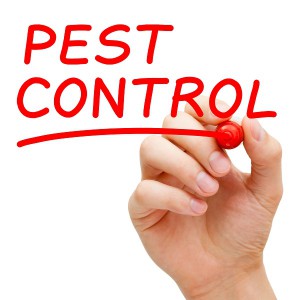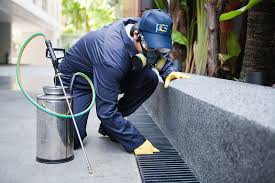Common Household Pests and How to Get Rid of Them
 Often living with us without paying the rent, household pests ere thriving on our resources while getting on our nerves. Pesticides and other chemical products have immense environmental footprint, as they are hard to isolate on they contaminate the soil or water sources. This short guide will try to point out the characteristics of the least popular homegrown pests and natural, non-toxic ways of their removal and extermination.
Often living with us without paying the rent, household pests ere thriving on our resources while getting on our nerves. Pesticides and other chemical products have immense environmental footprint, as they are hard to isolate on they contaminate the soil or water sources. This short guide will try to point out the characteristics of the least popular homegrown pests and natural, non-toxic ways of their removal and extermination.
Ants
These segmented inserts live in colonies and can be found everywhere. Still they prefer nesting in soil in the foot of buildings along sidewalks or near roots of trees and plants. Damp and warm locations suit them better than dry ones, so they can feel pretty welcoming in homes. They are omnivores and their pesky nature make them more unwanted that their rare bite. Spraying them with soapy water suffocates them as they cannot breathe through it. Ants dislike cucumber so leaving a few peels on their entryway is a good option. The same works with mint teabags.
Bed Bugs
Flat bodied vampiric insects a few millimeters long that feed solely on human or animal blood. Some experts believe that their breakage in the last few years is brought by expansion of international travel, cheap hostels and couch surfing. They don’t vector any disease but their bite is itching and often leads to insomnia and discomfort. They are best beaten of in advance, so vacuum and clean the infected rooms, followed by setting up traps which use pheromones, heat or CO2 to lure them onto sticky surfaces. Ultimately wash your bed sheets on high temperature.
 Fleas
Fleas
Often triggering allergic reaction, the bite of these tiny jumpers is annoying, especially as they can transmit diseases like tapeworms. Fleas are what pest control products work best in the preventive phase. Preventive pet medication can keep them at bay, but once they have made inside, they are a pain to remove. The best strategy involves frequent vacuuming, using light and heat bug traps, while lemon, wormwood and rosemary are considered natural non-toxic flea deterrents.
Mosquitos
These flying bloodsucker seem they thrive all around the worlds. They breed in still water pools, although some species have adapted to drier breeding grounds. They can be especially enervating in spring and summer in Northern hemisphere. Their red itchy bite is not as painful as it is scratchy. Besides, they carry many disease and blood parasites. What you need to do is make your home as inhospitable to them as it gets. Keep them outside by using window screens and closed windows, Drain standing water pools like rain collectors to inhibit breeding. Use natural deterrents like lemon eucalyptus oil or another essential oil like lavender, peppermint, or citronella.
Flies
They live wherever people do and eat whatever people eat, and worse. Apart from being pesky, they are first grade bacteria vectors as they commute between rotting garbage and our homes on regular basis, with a short stop to a neighboring animal carcass. The beat ways to deal with them is to remove their food by taking the garbage out regularly and collect any spills promptly. You can engineer some interesting eco-friendly home traps.
There is no reason to share our living space and resources with these unpaying and annoying tenants. The best strategy for getting rid of any of these pests is prevention, or denying them their living space and habits. However, when they break in, there is a number of natural, bio-solutions that work as efficiently as heavy duty chemical pesticides.
Written By Derek Lotts
Exclusively for Homes Re-Imagined, LLC